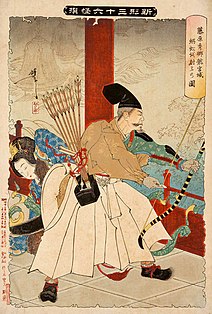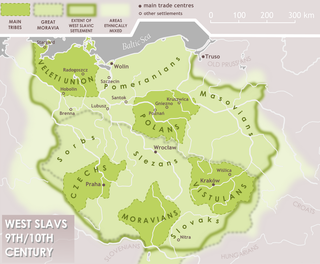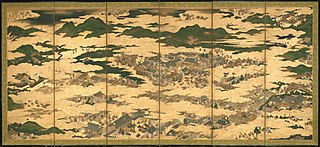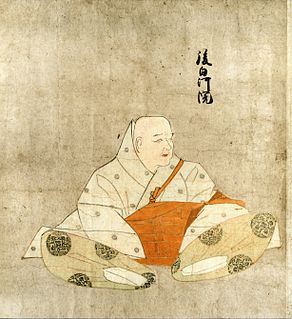Taira no Sadamori (平 貞盛)(10th century) was a samurai of the Taira clan who was involved in suppressing the revolt of Taira no Masakado in the 930s-940. He was the son of Taira no Kunika and grandson of Taira no Takamochi, the founder of the Kammu Heishi line. Sadamori was an ancestor of the Hōjō clan which wielded considerable political power several centuries later, during the Kamakura period; his fourth son, Taira no Korehira, was the progenitor of the Ise Taira branch family.

Taira clan was a major Japanese clan of samurai.

Taira no Masakado was a samurai in the Heian period of Japan, who led one of the largest insurgent forces in the period against the central government of Kyoto.

The Hōjō clan in the history of Japan was a family who controlled the hereditary title of shikken (regent) of the Kamakura shogunate between 1203 and 1333. Despite the title, in practice the family wielded actual governmental power during this period compared to both the Kamakura shōguns, or the Imperial Court in Kyoto, whose authority was largely symbolic. The Hōjō are known for fostering Zen Buddhism and for leading the successful opposition to the Mongol invasions of Japan. Resentment at Hōjō rule eventually culminated in the overthrow of the clan and the establishment of the Ashikaga shogunate.
In 935, while Sadamori held the post of Samanojō (deputy horseguard), his father was killed by Taira no Masakado, in an uprising.
Sadamori and Fujiwara no Hidesato pursued and faced Masakado, killing him in the 940 battle of Kojima. [1]

Fujiwara no Hidesato, was a kuge of tenth century Heian Japan. He is famous for his military exploits and courage, and is regarded as the common ancestor of the Ōshū branch of the Fujiwara clan, the Yūki, Oyama, and Shimokōbe families.
Sadamori was awarded the fifth rank in court for his heroism, and over the course of his life later earned the posts of Chinjufu shogun and governor ( kami ) of Mutsu Province, as well as the fourth rank at court.
Kokushi were officials in Classical Japan sent from the central government to oversee a province from around the 8th century, after the enactment of the Ritsuryō system. Kokushi held considerable power and responsibility according to the Ritsuryō, including tax collection, etc. The highest level for a Kokushi was Kami (守). So, for instance, the chief kokushi (governor) of Kai would have the title of Kai no Kami (甲斐守). In some cases, the Kami himself was living directly in the province he was charged with, delegating his powers to lower ranking officials. The highest official effectively in charge of the province was called Zuryō (受領).

Mutsu Province was an old province of Japan in the area of Fukushima, Miyagi, Iwate and Aomori Prefectures and the municipalities of Kazuno and Kosaka in Akita Prefecture.
Elements of Sadamori's life are mentioned in the folklore volume Konjaku Monogatarishū (Tales of Past and Present).). [2]
Konjaku Monogatarishū, also known as the Konjaku Monogatari (今昔物語), is a Japanese collection of over one thousand tales written during the late Heian period (794–1185). The entire collection was originally contained in 31 volumes, of which 28 remain today. The volumes cover various tales from India, China and Japan. Detailed evidence of lost monogatari exist in the form of literary critique, which can be studied to reconstruct the objects of their critique to some extent.













